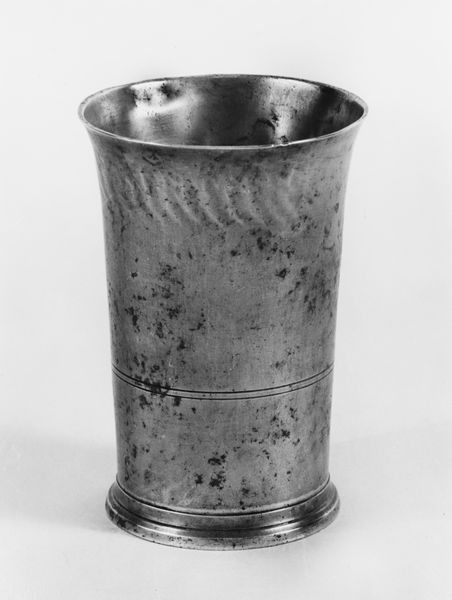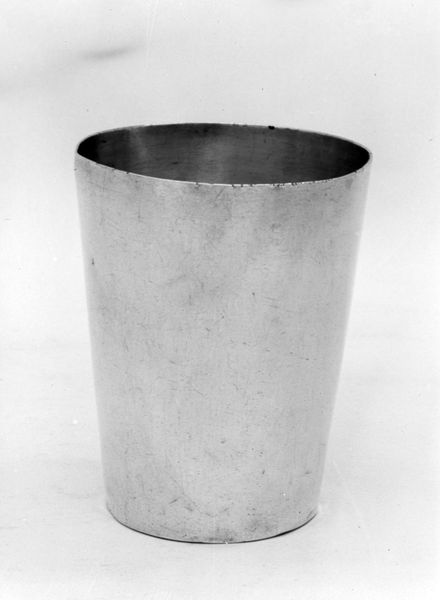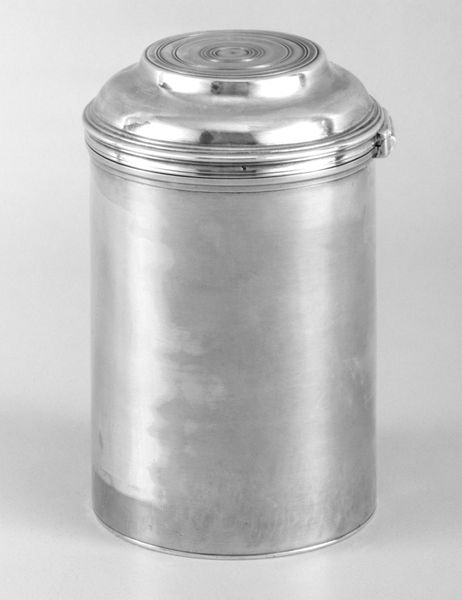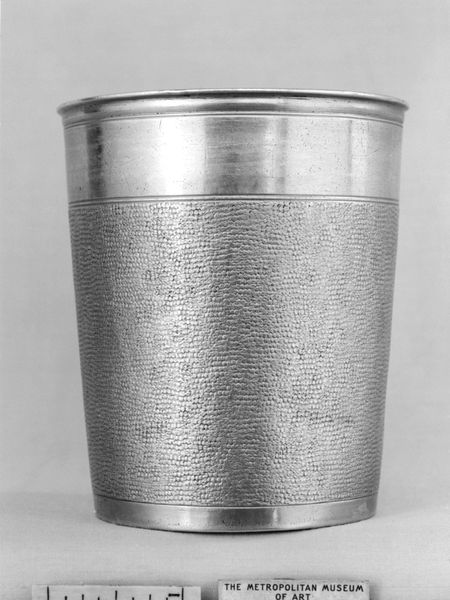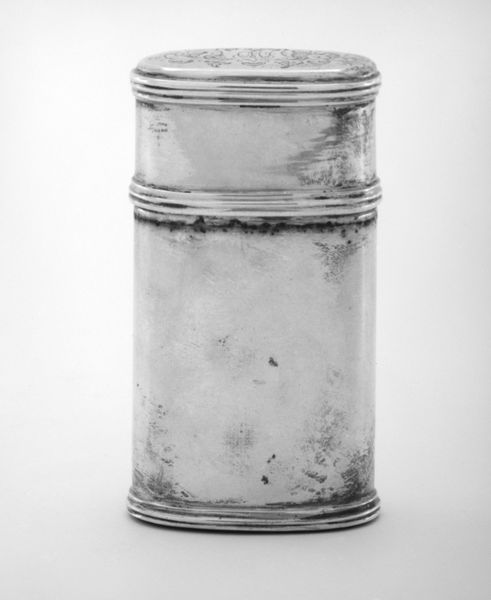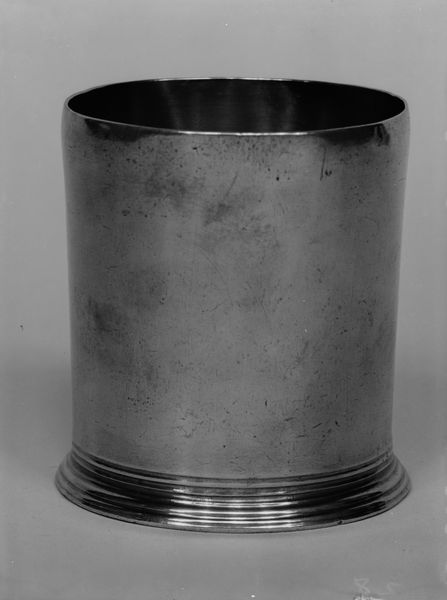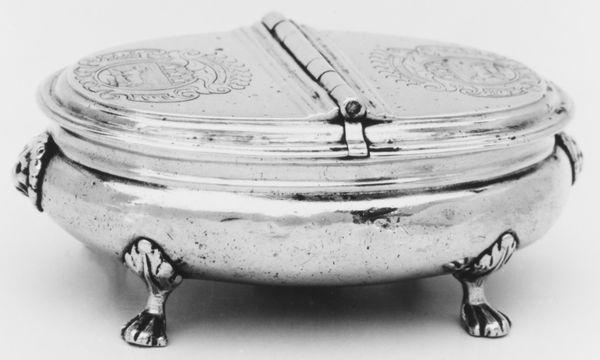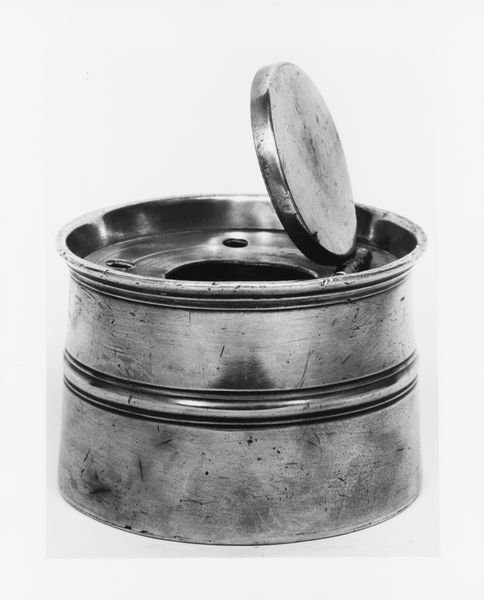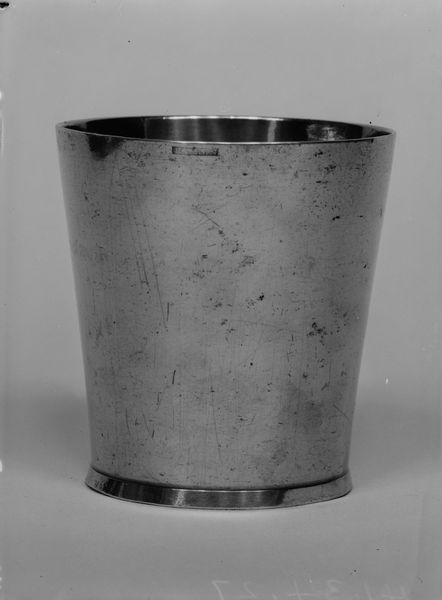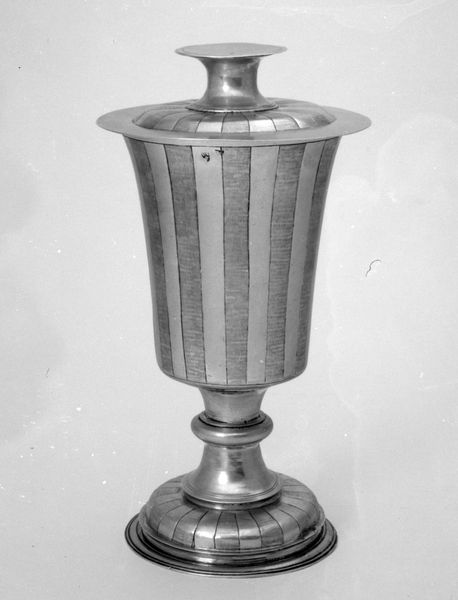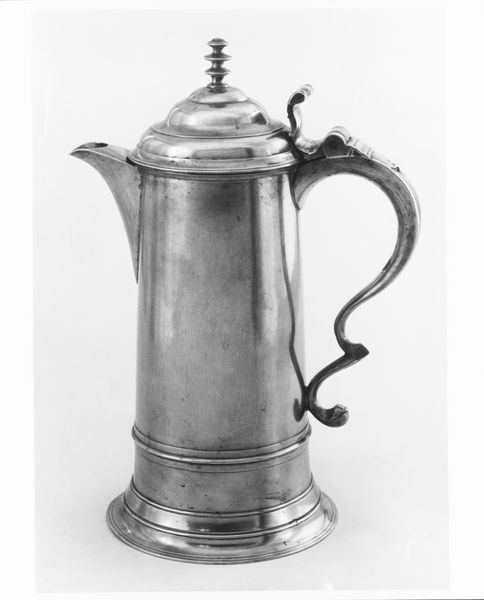
earthenware, wood
#
earthenware
#
stoneware
#
united-states
#
wood
Dimensions: 10 1/4 x 7 1/2 x 7 1/2 in. (26 x 19.1 x 19.1 cm)
Copyright: Public Domain
Curator: Here we have "Sugar Barrel" created sometime between 1825 and 1850 by Joseph Long Lehn. It is a fascinating example of early American craftsmanship and design. The barrel itself is constructed of wood, perhaps originally earthenware, and it's currently held at the Metropolitan Museum of Art. Editor: It possesses an unusual starkness, doesn’t it? Stripped back but beautiful. The shape is pleasing—slightly cylindrical, and functional. I’m immediately drawn to how humble it feels. You can almost sense the austerity of its original setting. Curator: Precisely! Simplicity is key, but let’s delve a bit deeper. The decoration itself, while minimal, holds significance. Those repeated wave motifs encircling the barrel--what might those signify to the people who created and used it? Do they speak of movement, prosperity, the ever-flowing bounty of life? Editor: Maybe it connects to colonial trade routes of the time—to movement of sugar in the Atlantic and Caribbean? A somewhat silent and simplified visual reminder of complex, sometimes exploitative economies and systems? The ripples echo a past transaction and relationship to the commodity in question. Curator: It’s intriguing how this simple form carries a wealth of potential readings, isn't it? The circular pattern on the lid further reinforces this sense of interconnectedness, drawing our eye and binding the whole piece in an intentional way. Think about it as a mandala or a miniature world—held right in your hands. Editor: And considering the barrel’s purpose, to hold sugar...we must factor in that relationship, especially its centrality during the slave trade. A common, unassuming item speaks volumes on so many intersecting issues of labor, foodways, power, and access. Its very presence challenges a purely romantic vision of the past. Curator: True—the item existed in the wider social milieu, inextricably linked to human lives in different parts of the world. Lehn was simply responding to an immediate market. We as viewers are responsible for placing his wares back within their lived contexts. It is a responsibility which enriches our appreciation for what is both seen and unseen here. Editor: Well, I came in with the sense that it looked humble and almost forlorn. But what stays with me now is how incredibly loaded and significant this sugar barrel really is, and what an invitation it provides us to think critically about objects in our world. Curator: Agreed—it’s about remembering that beauty exists in the everyday, yes, but also about expanding our appreciation for those meanings embedded in it.
Comments
No comments
Be the first to comment and join the conversation on the ultimate creative platform.
